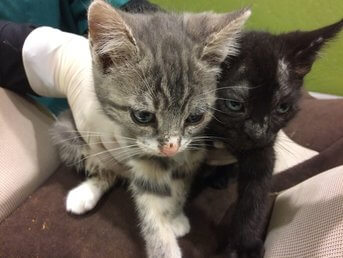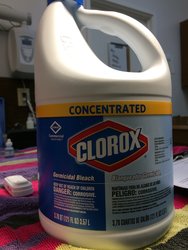Ringworm is a fungal infection that can infect the hair, skin and/or nails of cats and dogs. There are actually no worms involved! This disease is contagious, and can also affect other mammals, including humans, so we want to get a handle on any infections as soon as possible!
Signs to look out for if you believe your pet might have ringworm:
- itchiness
- hair loss in patches, especially with crustiness
- red, raised lesions
-abnormal nail growth or brittle, discolored nails

We see ringworm most often in cats, and especially kittens because their immune system is not yet mature. The kittens at the left are both affected--the black one much worse, both have crusty areas of hairloss on their faces, ears, and paws.
Some pets may be asymptomatic carriers—they can carry the fungus but show none of the listed symptoms. In these cases, it can still be transferred to people or other animals.
If ringworm is suspected, the doctor will perform either a fungal culture from a sample of your pet's hair, or a special lab test that looks for the DNA of the ringworm fungus. Another way to help make the diagnosis is to examine the pet with a blacklight—some species of ringworm will make the infected hairs glow bright green.
Ringworm is treatable, with oral medications and sometimes also topical medications or shampoos. Treatment is generally for at least one month, but may take longer, so do not stop the medication until given the go-ahead!

Decontamination of the environment is important to prevent re-infection, or spreading the fungus to other family members. Ringworm lives on shed hairs wherever your pet has been, so you can disinfect surfaces with bleach (diluted 1 part bleach to 10 parts water). Anything that can be laundered will be free of spores if you wash it twice. During treatment, we recommend limiting contact between the infected pet and any other animals, or people, especially young children or immunocompromised adults who may be more susceptible to infection.
Let us know if you have any questions about ringworm!
